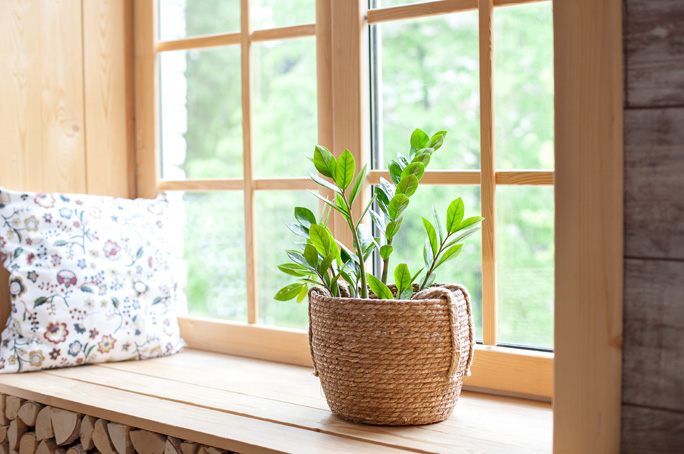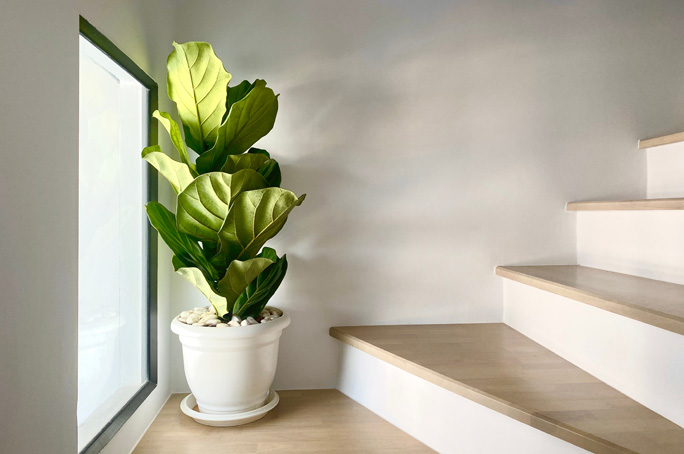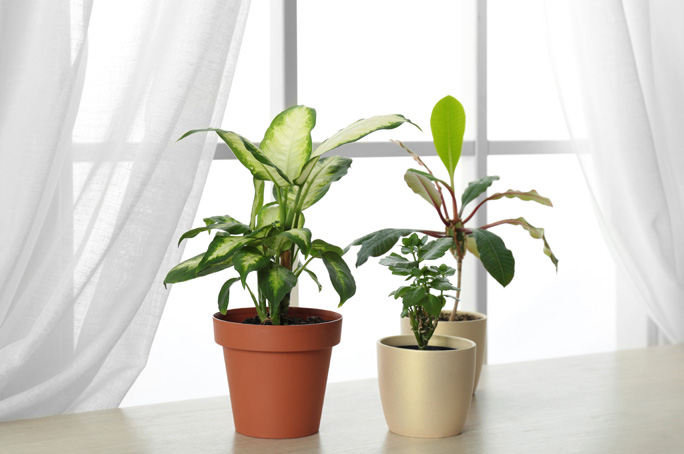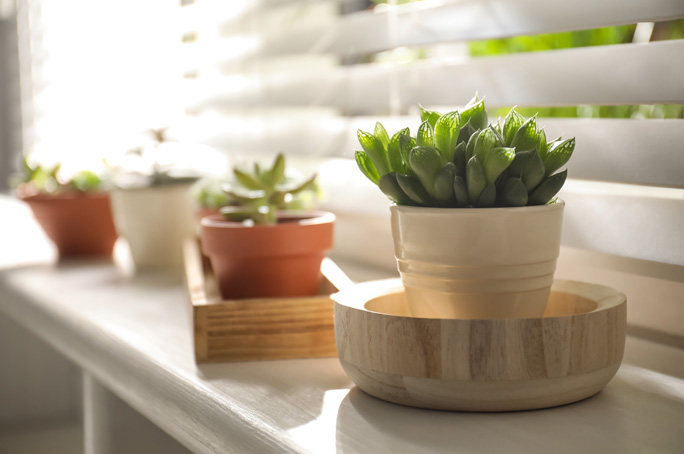Light is one of the most vital factors that come into play when choosing the right spot for your plant. Not every plant can handle a brightly-lit windowsill or the darkest corner of the room. That’s why it’s essential to know what kind of natural light you can provide for your plants. For the most part, this will depend on the direction your windows are facing: north, east, west, or south.
In this insight, we will cover the basics of all 4 types of window direction.
North-Facing Windows

North-facing windows don’t get as much sunlight as others. They don’t provide any direct sunlight, and the most you can get from them is some indirect light. But this doesn’t mean that your north-facing window is good for nothing! It provides ideal conditions for plants that grow in the shade of trees and have limited exposure to sunlight in their natural habitat—they are usually called low-light plants. Moreover, your plants with delicate foliage will thank you for keeping them away from direct sun rays. Keep in mind that in winter, the amount of sunlight will decrease significantly, so even the most shade-loving plants may struggle close to a north-facing window. During the cold month, you can move them to a sunnier spot or get a grow light. Just remember that all changes should be gradual.
Place these plants next to a north-facing window:
- Ivy
- ZZ plant
- Spider plant
- Swiss cheese plant
East-Facing Windows

East-facing windows provide some direct light in the morning and indirect sunlight afterwards. The morning sun is quite mild, so this exposure is perfect for plants that need some direct light but not too much. In general, all of your plants that prefer moderate and bright indirect light will enjoy eastern exposure.
Place these plants next to an east-facing window:
- Fiddle-leaf fig
- Chinese money plant
- Satin pothos
- Peperomia
West-Facing Windows

Just like east-facing windows, west-facing ones get direct sunlight exposure for about half of the day. In the morning, it provides bright indirect light. As the sun progresses to the west throughout the day, the light becomes direct. It’s more intense and hotter than what you usually get from an east-facing window, so you need to be careful: plants with gentle leaves may turn brown very quickly in these conditions. Overall, western exposure suits sun- and heat-loving plants that like to receive about 4–6 hours of direct sun a day.
Place these plants next to a west-facing window:
- Dumbcane
- Variegated croton
- Cranesbill
- Bird of paradise
- Yellow butterfly palm
South-Facing Windows

Out of all the windows, the south-facing ones are the sunniest and hottest. Most cacti and succulents will feel at home there as well as all plants that need full sun to thrive. Your variegated plants will also enjoy southern exposure, as it’ll help them maintain their colors. But keep in mind that not all plants are prepared for intense, direct sunlight. If this is the only exposure in your house, it may be a good idea to place delicate plants a few feet away from the window, while your heat-loving plants can bask in the sun right on the windowsill. You can also diffuse the light with a curtain—this way, you can protect your plants from harsh sun rays.
Place these plants next to a south-facing window:
- Prickly pear
- Echeveria
- African milk tree
- Elephant’s foot
- Basil
If your plant doesn’t like the amount of light it gets, it’ll definitely let you know. Watch out for yellow and dry leaves—they indicate that your plant is receiving too much sunlight. Leggy growth may point to a lack of light. Make sure to keep these tips in mind when picking the best spot for your next plant.
